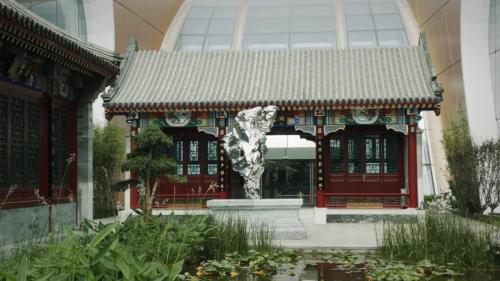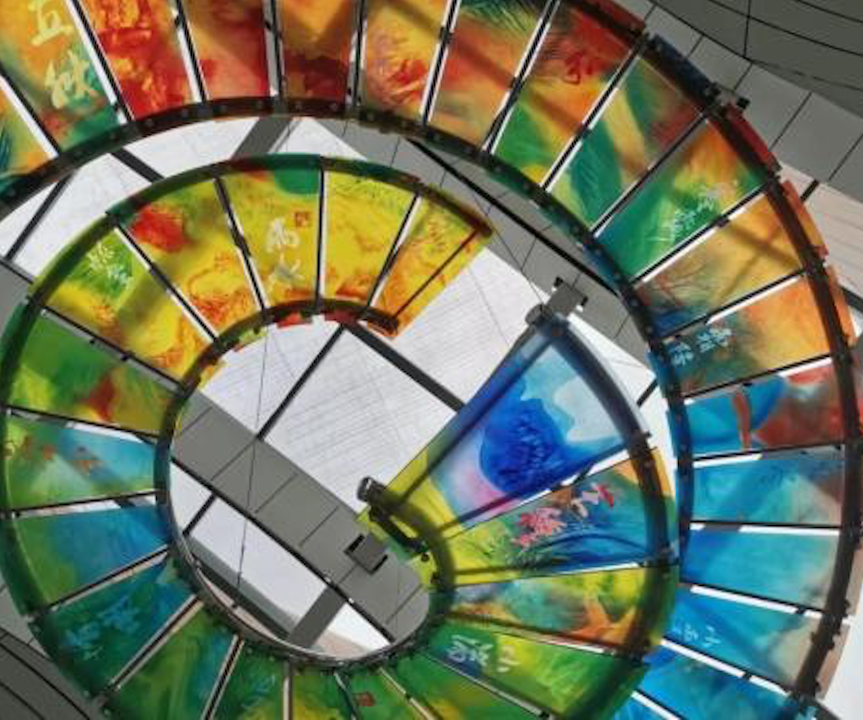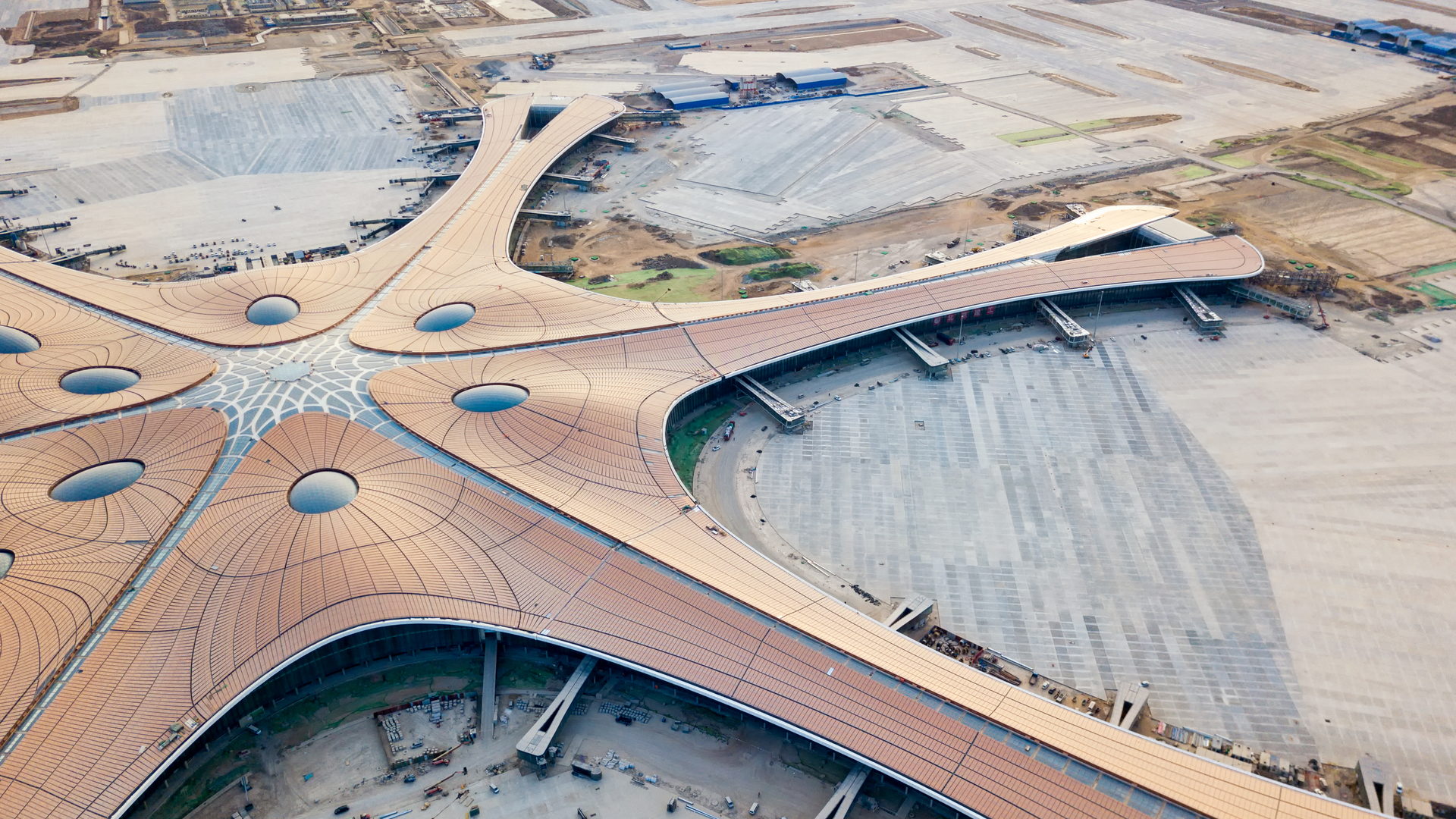Everything about China’s newest airport, Beijing Daxing, is staggering. At 7.5 million square feet it’s the world’s largest airport, it cost $12 billion to build, the 100 million annual passengers anticipated by 2040 will make it the globe’s busiest airport, and then there’s the golden starfish-shaped design by the late British architect Zaha Hadid.
While structural features that ease passenger navigation — such as stacking the international and domestic terminals vertically — will rightly receive praise, Beijing Daxing has integrated artwork throughout the capital’s second major airport in a manner equally worthy of attention. The general public seems to agree with an average of 15,000 people visiting the airport to take photographs since opening.
The Central Academy of Fine Arts (CAFA), China’s most prestigious art academy run by the Ministry of Education, was tasked with designing art spaces throughout the airport. It hasn’t disappointed.

Courtyard areas inside Beijing Daxing take inspiration from Suzhou’s famed gardents. Image: Sina Weibo
While the influence of historical Chinese structures is evident in the Pritzker winning architect’s designs, CAFA has gone a step further by placing Chinese art, both contemporary and traditional, in the airport’s passenger corridors, its five main courtyards, and VIP rooms. For museums and cultural institutions, the news should serve as a reminder that art is increasingly omnipresent in Chinese public spaces.
For passengers with time to kill (those indifferent to duty-free shopping), Daxing’s courtyards are certainly inviting. Designed in consultation with Xu Bing, one of China’s most prominent contemporary artists, the courtyards feature Xu’s playful calligraphy, ample seating, and features echoing Suzhou’s famous aristocratic gardens.

The work “24 Solar Terms” was chosen and installed by Beijing’s Central Academy of Fine Art (CAFA). Image: Sina Weibo
As passengers walk along the airport’s corridors (designed so that the longest distance from security to gate can be covered in eight minutes by foot) they pass interactive art screens. Composed of thousands of LED lights, the screens call to mind traditional Chinese scroll paintings that come to life as one passes by. Interactive installations continue with the seating CAFA has spread around the airport, much of which is movable and can be reconfigured to suit the needs of passengers.
In the run-up to the 2008 Beijing Olympics, Capital International Airport, Beijing’s other international airport, received a major modernization as it prepared to welcome the world to China. Beijing’s second airport has opened at an equally symbolic time; to commemorate China’s 70th anniversary. Although Hadid’s iconic curves and swirls first draw your attention, the artwork within the airport, as a balance of old and new, are fitting for this moment in in China’s development.
Words by Richard Whiddington



